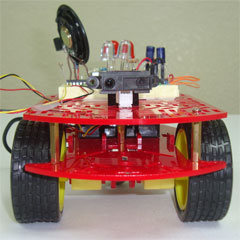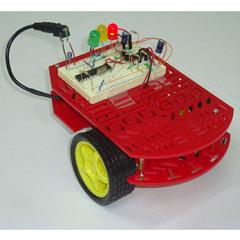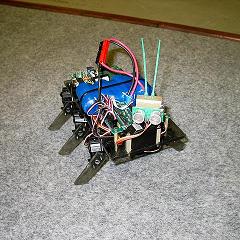Categories
- animatronics (12)
- apple (11)
- arduino (179)
- art (41)
- articles (121)
- artificial intelligence (11)
- automation (421)
- avr (205)
- bitcoin (3)
- breadboard (9)
- cameras (57)
- cars (26)
- cell phones (28)
- clothing mods (21)
- console mods (26)
- dangerous (94)
- desktop mods (24)
- embedded (5)
- flying things (54)
- fpga (22)
- gaming creations (108)
- interface (225)
- internet (17)
- laptop mods (6)
- lasers (22)
- linux (7)
- magnetic (3)
- medical (12)
- microcontrollers (51)
- misc projects (152)
- msp (12)
- music (124)
- pic (90)
- projects (23)
- pyroedu (76)
- raspberry pi (26)
- robots (312)
- security (36)
- sensors (307)
- software (200)
- solar (19)
- stamp (9)
- tools (149)
- tutorials (98)
- Uncategorized (45)
- usb (44)
- wireless (256)
Sponsors


Posted May 25, 2012 by Chris
“Although we have been having fun making things on our desks or work benches, it is time to slowly enter the real world and hack something up. The other day I was in a variety store to buy some glue, and happened across a very cheap remote-control car. After noticing it had full directional control (left, right, forwards and backwards) it occured to me that we could control it with an arduino.”

Posted May 24, 2012 by Chris
“Here is the first version of a Braitenberg vehicle, powered with two RC-Servos and an Arduino as its brain. Best of all, it needs no soldering, drilling or hot glue. And if you’ve played already with Arduinos, there is a good chance, that you have already most of the needed parts at home..”

Posted May 21, 2012 by Chris
“Building a self-balancing robot is one of those things that every hobbyist and engineer want to do. But there are a few hurdles for a lot of people. There is the theory on the one hand and then there is the mechanics on the other. In this and the next few posts, I will show you a self-balancing robot I recently built and will explain in details on some of the most important aspects.”

Posted May 17, 2012 by Chris
“This week we will continue our Building A Robot series with Part 3: The Proximity Sensor. The standard IR proximity sensor will be introduced and integrated into the robot we built in Part 1: The Chassis and combined with the motor control we developed in Part 2: Motor Control. The final product will be a robot that can sense its surroundings.”

Posted May 16, 2012 by Chris
“Students were asked to build an autonomous robot capable of playing ‘SPDL Happy Fun Ball’. SPDLHFB is played on a large flat field, which has at its center a ball dispenser. Robots must request balls from the dispenser, then either launch them or transport them to one of three goals at the perimeter of the field. The objective is to score as many points as possible in 2 minutes of play, or until the ball dispenser runs out of balls.”

Posted May 12, 2012 by Chris
“TI has hit a homerun with the $4.30 TI Launchpad. This low-cost, professional, easy to use tool gives the beginner everything he/she needs to get up and running in the world of microcontrollers and robotics.”

Posted May 11, 2012 by Chris
“Apelike swinging motions achieve unprecedented energy efficiency for a climbing robot that combines mechanical ratcheting with precise electronic control algorithms to navigate vertical ascents.”

Posted May 10, 2012 by Chris
“In this article we will move forward with the Building A Robot series by adding the electronics necessary to control the speed and direction of both motors on the robotic chassis, which we developed in the previous article, Part 1: The Chassis. The two main additions in this portion of the project are a microcontroller and a motor controller IC.”

Posted May 8, 2012 by Chris
“Lobo was constructed largely from bits and pieces we had just laying around: Javelin Stamp, ASC16 – a dedicated RC servo controller, SRF04 ultrasonic ranger for obstacle avoidance, 13 unmodified RC servos…..and 2 zip-ties for ‘ears’ (certainly, the most critical component).”

Posted May 7, 2012 by Chris
“The goal of the 2005 Telerobotics project was to start the autonomous navigation theme in the telerobotics series. Students designed a guide-bot that would guide its user to a location selected from the pre-encoded terrain map. Only acoustic sensors and wheel encoders were used for navigation and that made the project somewhat challenging to implement. It is much easier to navigate with laser distance sensors.”







